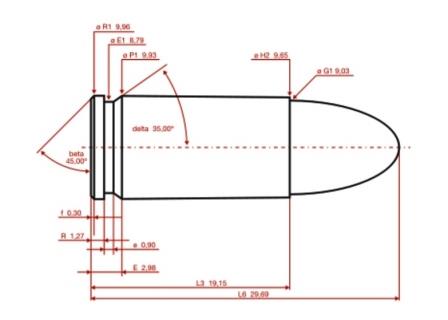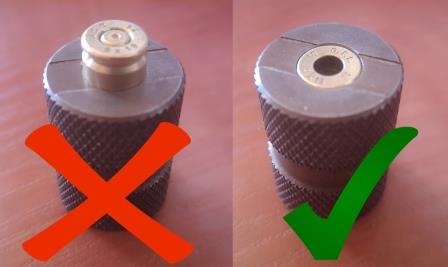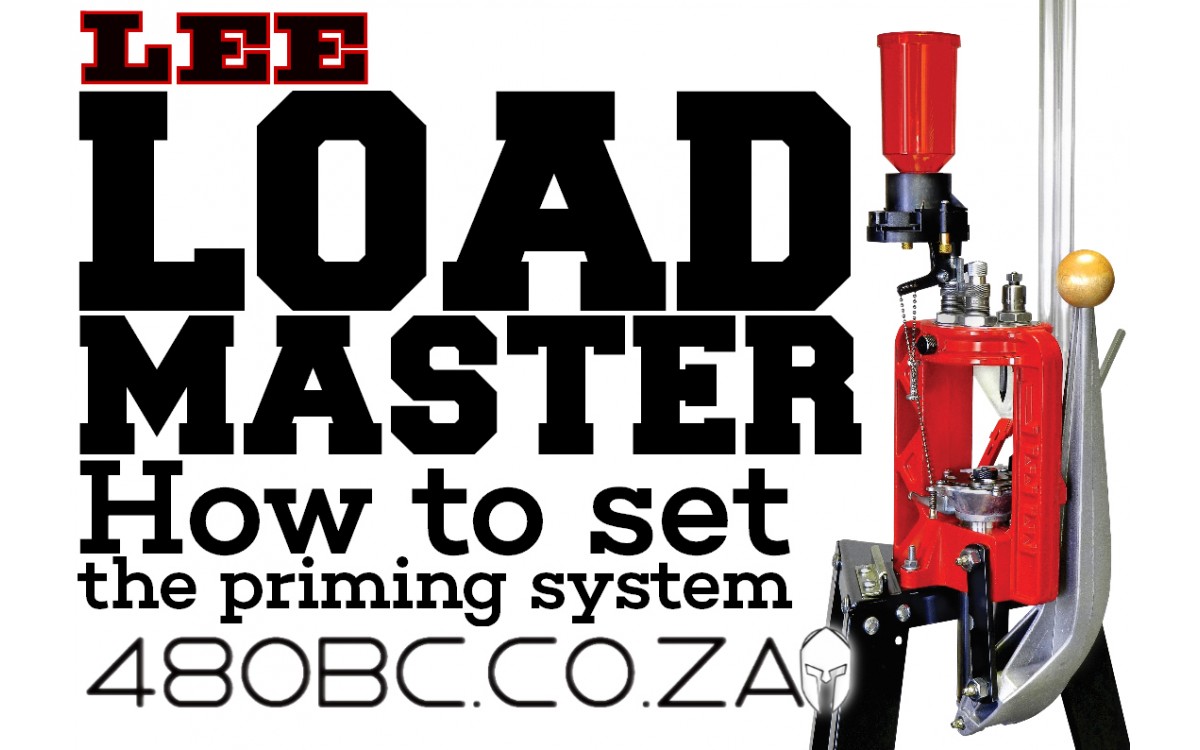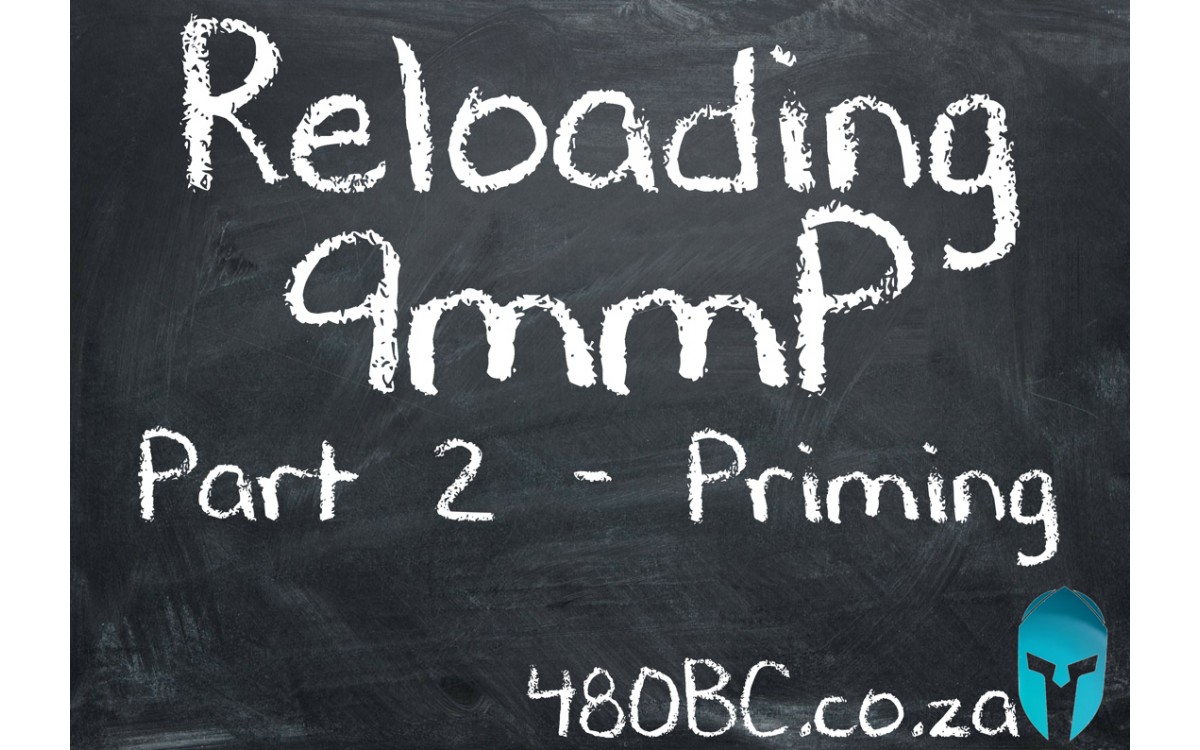These posts
will be to try and help you learn about the reloading process. I have found
that some new reloaders struggle in the beginning because they do not
understand the whole process. By this I mean understanding what each die does
and why…so let’s jump in.
Warning –
this will only apply to 9mmp loads as it is by far the most reloaded cartridge
in SA. Loads discussed are my own. Do not copy them, do a proper safe load
development.
Part1 – Resizing
So you have
shot a few rounds at the range and hopefully you remembered to collect your
cases; they are the most expensive part of the reloading components after all.
The only
cases I would suggest you leave in the trash can is Berdan primed cases but
more on that later.
Let’s look
at what happened to the case when it was fired and why we need to resize. For
that we need to look at the design of the 9mmp.

9mmp, 9mm
Para, 9mm Luger, 9x19 are a few of the names associated to the 9x19mm
Parabellum, designed by Georg Luger in 1902 for the Luger Semi Auto Pistol. You
see why it is sometimes called 9mm Luger – actually it is officially designated
as the 9mm Luger by the Sporting Arms and Ammunition Manufacturers' Institute
(SAAMI).
Here in good
old South Africa is more commonly referred to as 9mm Para – Para being for Para
bellum – taken for the Latin “Si vis pacem, para bellum”. Different names for
the same thing…just don’t confuse it with 9mm Makarov or 9mm Short.
The 9mmp is
a rimless, tapered case.
What is
rimless? Just what it says a 9mmp does not have a rim as such. Most revolver
cases have rims that hold the case in place in the cylinder. A 9mmp has an
extractor groove and a “rim” to aid extraction. This “rim” however does not
hold the cartridge in the chamber as a Rimmed Revolver case holds the cartridge
in a revolver cylinder.
Tapered?
This is an important part to understand. Simply the bottom of the case before
the extractor groove is bigger than the case mouth. Not by much, only 0.28mm.
This is the part of the design that could make resizing difficult.
The 9mmp or
most other semi auto pistol calibres headspaces on the mouth of the case; take
your barrel out of your gun safely, look down the chamber and you will note a
ridge just before the rifling of the barrel. The case stops on this ridge when
loaded in the chamber.
Now when the
cartridge is loaded from the magazine it will stop on this ridge in the chamber.
When the primer pin/striker hits the primer, the primer is crushed and ignites
the gun powder in the case. The gun
powder creates a pressurized gas that expands the case to seal the breach of
the firearm. This seal of the chamber is to prevent gases from escaping
rearwards and force the bullet down the barrel on to the target.
Cases are
made of brass and expand under pressure to form a closed gas tight fit with the
sides of the chamber, and then contract slightly so that the case remains loose
and can be removed by the extractor.
Now if you
understand this you will see that the case takes a lot of pressure and has now
lost its original shape. Now we need to reshape the case back to its original
dimensions to reload it again.
Ps. you need
to clean your brass before you continue; there are many ways and we will
discuss this later but for now let’s imagine the case has been cleaned.
So now we get to part 1 of reloading a 9mmp, resizing it back in shape; this is done with a resizing die, this die also removes the old primer.
Let’s look
at the Lee resizing and decapping die…and in my mind you cannot get a better
die for the job. This die has a carbide sizing ring that resizes the case. You
do not need to lube cases for resizing when using a carbide die BUT lubing the
cases will just make life easier. And on a progressive make things run smooth
and help in extending the life of the carrier.
Setting up
this die is where most problems begin. An incorrectly set die will not fully
resize the case which will lead to feeding problems. Follow Lee’s instructions.
This applies to any press you set this up in; be it a single stage or
progressive.
·
Set the lock ring as far up on the die as it
will go.
·
Make sure you have the correct shell holder
installed if you are using a single stage or turret press, same goes for a
progressive press - use the correct shell plate. Raise the ram/carrier to the
top of the stroke. Keep pressure on the ram/carrier.
·
Turn the die in until it makes firm contact with
the ram/carrier.
·
Drop the ram/carrier slightly and turn the die ¼
more in. (LOAD MASTER NOTE! Only turn the die in more until your case is
successfully sized, do not turn the die in more than ¼. Doing this will lead to
priming issues – See our Load Master priming article in our blog.)
·
Raise the ram/carrier again and keep pressure,
turn the lock ring down and finger tighten.
Your sizing
die is now set.
The decapper
should be set deep enough to remove the primer but not so deep as to obstruct
the case from fully entering the die. You can set the decapper clamp so that if
you get a Berdan primed case in your press it just pushes the decapper out
instead of breaking it. But more importantly you should learn to feel what is
happening with the press. If you feel resistance here rather stop and have a
look.
Some
European spec 9mmp cases (S&B NX as example) are found here these days.
These have a smaller flash hole and can damage decapping pins. Replacing your
pistol decapper with a rifle or Universal decapping pin helps but keep spares
on hand for these cases…and again do not force the press.
Ok, now run
a few cases through the resizing die. Have a look each time to make sure the
bottom of the case is going all the way in the die – not the extractor groove.
The die is
designed to resize the case back to its tapered original size which is why
sometimes a 9mmp can be hard to resize but following these instructions, adding
a bit of lube and not short stroking the press should give you properly resized
cases every time.
However
cases do not last forever. You could get cases where the bottom has “bulged”
from numerous firings or high pressure loads. These cannot be resized with the
normal sizing die. The only way to correct them is to either roll them on a
roll sizer or run them through a Lee Bulge Buster.
Now there
are 2 ways of checking that your cases are properly sized. You could either
barrel drop them in your guns barrel – removed from the gun! Or a much better
way is to buy yourself a Case Gauge…these are designed to SAAMI minimum specs
and if the empty case fits in all the way and falls out easy, it will fit in
any 9mmp gun.

Up next we
look at priming…



